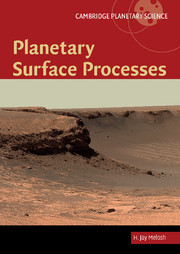2 - The shapes of planets and moons
Published online by Cambridge University Press: 05 June 2012
Summary
The equal gravitation of the parts on all sides would give a spherical figure to the planets, if it was not for their diurnal revolution in a circle ….
I. Newton, Principia, Theorem XVIModern space exploration has made everyone familiar with the idea that planets are mostly spherical. From a great distance a casual observer might not even notice that rotating planets and moons are not quite perfect spheres. However, careful examination reveals departures from perfection. Rotating planets are slightly oblate spheres, while tidally locked satellites are triaxial. Furthermore, once these bodies are approached closely, it becomes clear that nearly every planet and moon possesses topographic variations. Mountains, valleys, plains, and craters create landscapes that, up close, can challenge attempts to traverse them by mechanical rovers or human explorers.
The forces that create and maintain the topography of planetary bodies depend on the scale of the feature. The gravitational self-attraction that tends to make planets spherical operates differently on the scale of individual mountains. It is thus useful to distinguish several orders of relief that categorize different scales of topographic feature. This notion can be made mathematically precise through the use of spherical harmonics, a concept that will be discussed later in this chapter.
- Type
- Chapter
- Information
- Planetary Surface Processes , pp. 25 - 48Publisher: Cambridge University PressPrint publication year: 2011
- 1
- Cited by

